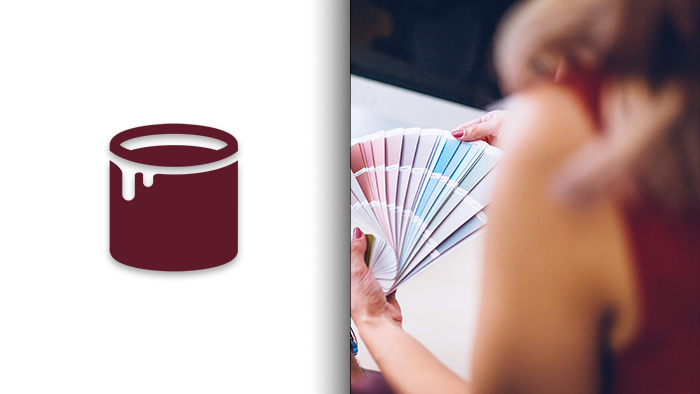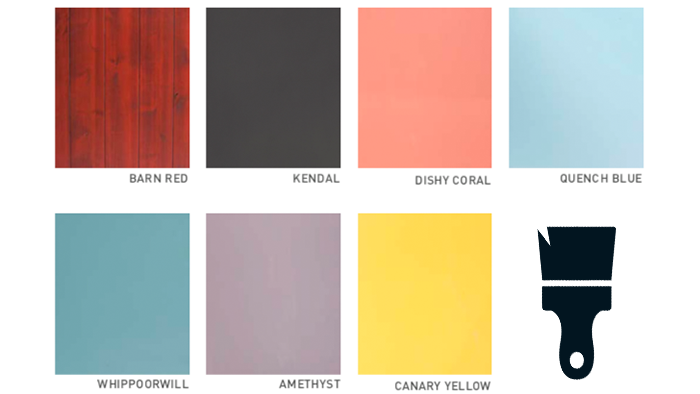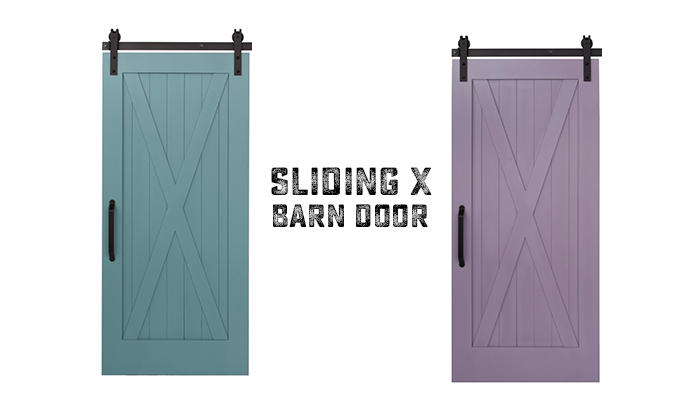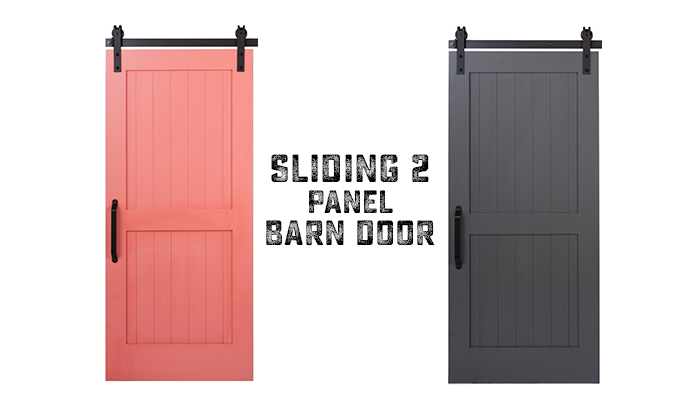1.800.891.8312
800-891-8312
FREE SHIPPING*
Free Shipping Details
Most orders over $500 qualify. Free shipping applies to Barn Door Hardware, Barn Doors, and Pocket Doors over $500.
Note: Front doors, interior doors, shower doors, any oversized door (wider than 3ft and taller than 7ft) and any special order doors have shipping costs calculated at checkout. Some barn door hardware track lengths do not qualify for free shipping.

How to Paint a Barn Door
Tuesday, September 25th, 2018
Author: Kate Allen - Rustica Founder and CEO
Share

How to Paint a Door
- Pick Your Color
- Prep Your Door
- Gear Up
- Strip Old Paint
- Clean
- Paint It
- Finishing Touch
- Enjoy the View

Pick your color
Like most painting projects, the hardest part is picking your color. Mulling over different shades and hues – it can be mentally (and emotionally) taxing. Like, why are there 173 shades of white? You’ll find yourself second-guessing and teeter-tottering back and forth only to more than likely settle on the very first color you chose.
Prep your door
Whether you built and installed your door from scratch, found it at an antique store or salvage yard, or bought it brand new, one thing is certain – you’ll want to make sure it’s sanded smoothly and evenly. Go over the door with a fine grit sandpaper to remove any possible hint of splinters or remove any existing varnish/stain to properly apply fresh paint.
Gear up
Gather all the necessary paint equipment you’ll need to get the job done.Utility knife: let’s be honest, who doesn’t have a use for one of these?
You will need a gallon of the paint of your choice. Your paint options include:
- Spray paint
- Latex paint
- Oil-based paint
- All in one paint

Strip Old Paint
You may have a door that already has to chip and peeling paint that needs to be stripped. It is possible to strip paint off both wood and metal doors, just be sure to follow the instructions on the bottle of paint stripper until you get it down to the bare wood of the door, and then clean. Use your medium 120 grit sandpaper to get the bigger sections of paint off, and the finer 220 grit until the piece feels smooth to the touch. Finally, wipe with the tack cloth to remove the dust.Clean
Now it’s time to clean your door. You want to make sure you have a clean, even surface for your new paint to adhere to. There are a variety of cleaners on the market; however, TSP is a painter’s favorite due to how well it works at removing dirt, dust, caked-on grime, scuffs, and all other dirt and debris from your surface (fun hack: use this to clean your walls! It is an amazing, all-purpose cleaner that will help with your yearly deep cleans.) Just be sure to wear gloves and take proper safety precautions, as it is a pretty powerful chemical.Paint it
The biggest obstacle you may run into when painting your door (after deciding on the color, of course) is the look you’re trying to convey. Do you want that distressed look that still shows some wood texture – giving it the allure of many weathered years on some beach? Orr do you want more of that thick, clean look that infuses vibrancy within your home?Finishing touch
Once you’re happy with the coats and the wood texture that you’re seeing after it dries, consider a sealer or varnish for a finished, glossy look, You can also use a wax to create a faded finish that still has a bit of luster.Enjoy the view
Enjoy your fresh, beautifully painted door as it will now add years and years of character and pop to your already stylish home décor. You’ll love it and your neighbors will envy it!Frequently Asked Questions About Painting a Door
Should I paint the door or trim first?
It actually doesn’t matter! It really comes down to personal preference, even for the pros. Some prefer to paint the door and then the trim, while others prefer to tape and paint the trim and then paint the door afterward.How long does it take to paint a door?
You’d be amazed how quickly you can paint a door. Once you have all the cleaning and prep work done, it takes an average of 15 to 20 minutes per side to paint a door.That said, you will need to factor in the time it takes to paint on primer, let that dry/cure, paint one to two coats of your chosen paint, and then a sealant as well. This will vary widely based on the brand or type of paint you choose, so be sure to read the label on the paint can or ask the professionals at the paint counter for advice.
All said you should be able to have a primer, two coats of paint, and a sealant on a door in four to six hours total.
What is the best paint for interior doors?
The paint type needed will vary based on the location of the door (if you are painting an interior door vs an exterior door, for example) and what your door material is.If you have a wood door, the type of paint you choose doesn’t matter as much as the finish: you will want something with a gloss or semi-gloss sheen on it. The more matte the paint finish is, the more fingerprints and scuffs will show. You have more freedom with the type of paint—acrylics, oils, latex, and even chalk paints have all been used with great success, so you definitely have a lot of color and brand options to choose from for your interior doors. That said, if you are specifically looking for front door paint, make sure the brand is rated for exterior use so you get paint created to withstand sun, rain, and all the other elements.
If you have a metal door or a fiberglass door, you will want to use exterior paint. These are typically latex-based or acrylic resin and will be more rust-resistant, fade-resistant, and the chemical compound helps prevent cracking and chips over time.
Can you paint a door without removing it?
It’s generally recommended that you remove the door and all door hardware prior to painting. However, if removing the door isn’t feasible (such as a heavy front door that you don’t have someone to help you move or if you don’t have anywhere to move it to for painting), you can definitely still paint with the door hanging on the hinges.Be sure to use painter's tape and carefully tape off all doorknobs and hinges. You will need to remove this tape immediately after you finish painting. Do not let the tape remain until it dries or it can pull the paint up.
Painting a Door is a Great DIY Project for Beginners
Painting a door is a great project for those wanting to dip their toes into DIY projects. You can easily do the project by yourself in an afternoon, and the end result can make a dramatic difference to your space.And, if you end up deciding your space needs a more dramatic makeover, we can help with that too! Shop Rustica.com for our full catalog of interior barn doors and exterior doors, and don’t hesitate to reach out to a Rustica designer if you have questions about the color, hardware, or design.


Rustica Shop & HQ 1060 Spring Creek PlaceSpringville Utah 84663Customer Service & Sales(800)-891-8312

Hitching Post
Event Venue
1520 N Main Street
Springville UT 84663
PRODUCTS
FEATURES
COMPANY
BUSINESS



